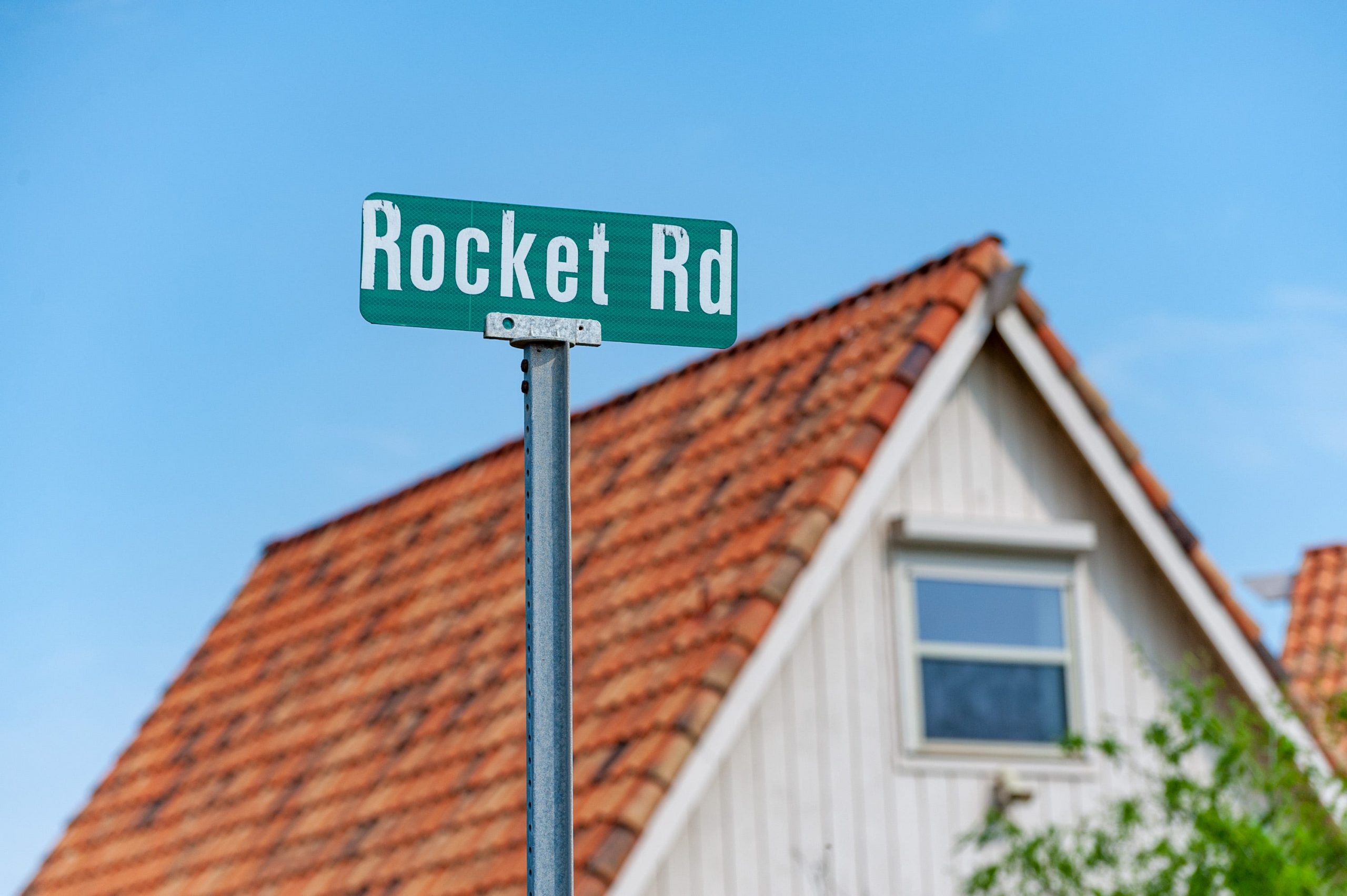- Elon Musk, founder of SpaceX, hopes to use a new steel rocket system called Starship to launch people to Mars, the moon, and careen passengers around Earth at hypersonic speeds.
- To develop Starship, which is designed to be fully reusable, SpaceX constructed an facility to build and test prototypes.
- Located in Boca Chica, Texas – a remote area at the southeastern tip of the state – the rocket facility has seen a frenetic increase in construction and test activity.
- The company has wheeled in RVs, taco trucks, fire pits, kayaks, and other amenities to make 24-7 work at the remote site more feasible and livable.
- Retiree-age residents who live there are slowly being bought out of their homes by SpaceX, but a contingent of about 10 homeowners haven’t sold to SpaceX.
- Visit Business Insider’s homepage for more stories.
Elon Musk is, by all accounts, racing to reach Mars.
To that end, the founder of SpaceX has mustered about 1,000 workers to a remote, beachy, and muddy strip of land at the southeastern tip of Texas called Boca Chica. His staff there is frenetically constructing a growing and evolving complex of tents, buildings, cranes, launch pads, and even employee residences to support around-the-clock work.
SpaceX’s goal is to rapidly develop a fully reusable steel rocket system called Starship that – if the idea pans out as Musk envisions – could slash the cost of sending anything to space, including people, by 100- to 10,000-fold. Such a system could routinize access to space, to the point passengers may be able to fly from New York City to Shanghai in under an hour, as well as attempt to populate the red planet starting in 2024.
Providing a stark contrast to the next-generation rocket facility, however, is a small community of retiree-age people who live or overwinter adjacent to SpaceX, some of whom bought homes in the area decades before the aerospace company existed (and they don’t much care for the occasional explosion of prototypes).
As interest in and use of the site has grown, the government has banned the use of drones, limiting overhead photography. Alphabet, which has invested in SpaceX, has also not updated satellite imagery of the region in about three years on Google Maps or Google Earth.
However, aerial photos taken by plane are permissible, and Mauricio Atilano, founder of RGV (Rio Grande Valley) Aerial Photography, is now making almost weekly flyovers to satisfy the appetites of people interested in seeing more of SpaceX's site than photos taken from the ground could ever provide.
The following pictures include many taken by Atilano, including some before-and-after animations that show the rapid evolution of SpaceX's Starship facility.
Although SpaceX earned permission to develop Boca Chica into a rocket facility in 2014, activity at the site didn't accelerate until mid-2018.
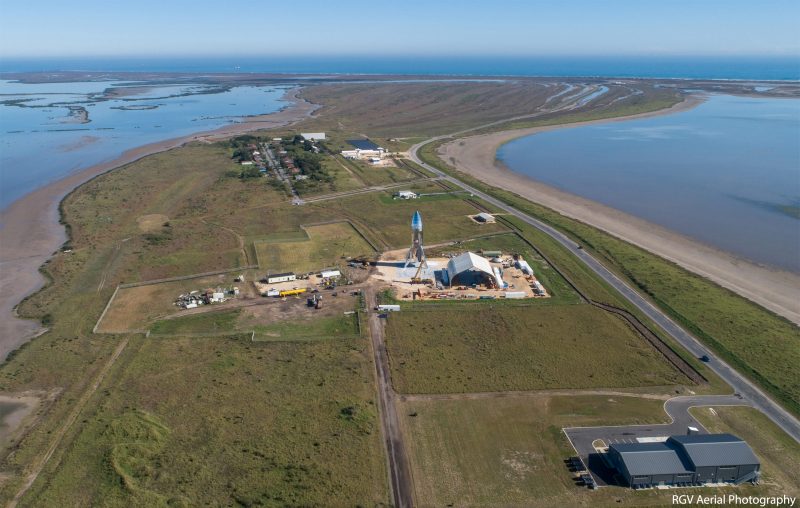
At that time, SpaceX workers descended upon Boca Chica to develop the company's land into a rudimentary launch pad and construct the first Starship spaceship prototype, called Starhopper, to test out a brand-new Raptor rocket engine.
The vehicle is the shiny steel rocket shown at center. Though its nosecone later blew off in powerful windstorm, the main rocket body held up and eventually launched over 500 feet into the air and landed itself in August 2019, proving the core system worked.
This animation shows a satellite image of the site taken in January 2014 — before SpaceX arrived — and the previous east-facing aerial photo, which Atilano took with a drone in January 2019.
As another before-and-after animation shows, SpaceX has continued to expand and evolve its Starship factory area.
Space X Boca Chica Build Site Year 2018 to 2020 overlayed images.
Space X Boca Chica Build Site Year 2018 to 2020 overlaid images. Cessna 172 🛩️and give you monthly (🤔 biweekly)updates of the Space X Boca ChicaSites.Thanks! https://t.co/HM7wP3RQV9 #RGV #SpaceX @elonmusk pic.twitter.com/Y4NiU8Wcb7
— RGV Aerial Photography (@RGVaerialphotos) June 16, 2020
The work has occurred in and around Boca Chica Village, a small community of retiree-age homeowners located less than 2 miles from a public beach — SpaceX has essentially surrounded it.
The company is also buying up homes in the one-street neighborhood under the not-so-veiled threat of eminent domain, to the point that about two-thirds of them all are now owned by the company.
Early on, some were turned into delivery areas and welding shops. Today, remaining and former homeowners have told Business Insider, SpaceX is remodeling and converting almost every home it buys into employee residences, since Musk said the site operates 24/7, and the nearest town is about a 30-minute drive west.
The above animation compares two west-facing views (one from January 2014, and another from June 2020) with Boca Chica Village in the foreground, the Starship factory in the background, and Highway 4 fading into the distance.
East down Highway 4, where the road ends and dumps vehicles into the sands of Boca Chica Beach, is SpaceX's launch zone.
SpaceX Boca Chica Launch Site Year 2018 to 2020 overlaid images for comparison.
Help support our future flyovers for monthly/biweekly updates https://t.co/dGpvgoDEmt#rgv #spacex #bocachica pic.twitter.com/qYsJBaDhii
— RGV Aerial Photography (@RGVaerialphotos) June 16, 2020
This above before-and-and after animation shows how much the launch zone of SpaceX's facility - which is where it fuels, test-fires, and sometimes flies prototypes - has morphed over time.
SpaceX is currently building a launch pad for a full-scale, roughly 39-story version of its new vehicle, called Starship-Super Heavy. ("Super Heavy" is a fully reusable booster that'd fly a Starship spaceship on top a good way toward orbit before landing back at the launch pad for refueling an reuse in subsequent Starship launches.)
This is how SpaceX envisions its full Starship-Super Heavy system launching from the planned pad at Boca Chica.
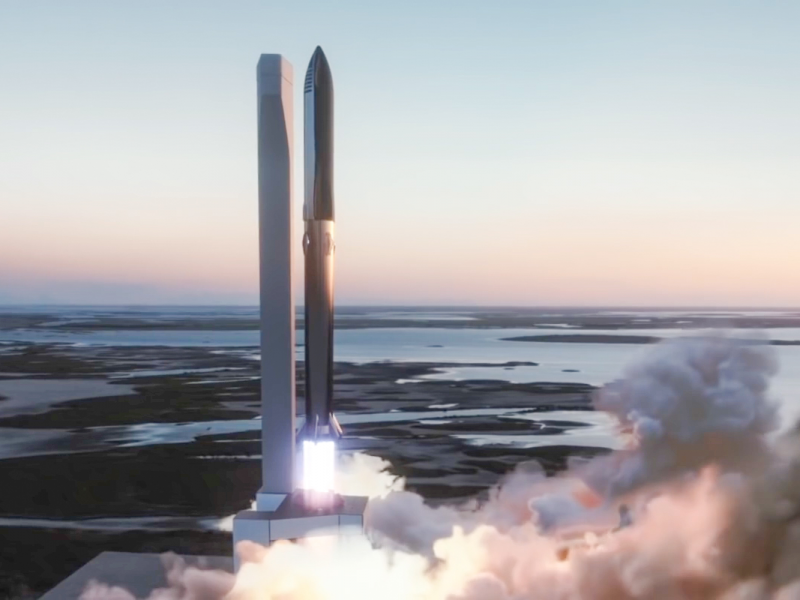
This still photo, taken by Atilano on June 17, 2020, provides an overview of the factory area, which is where the bulk of SpaceX activity occurs.

As Musk told Ars Technica in March, the goal is to develop processes and build out factory space that can crank out one flight-ready Starship per week in Boca Chica. Musk said creating such an operation in an efficient, cost-effective manner is the most challenging aspect of the Starship effort thus far.
Zooming in on certain sections of Atilano's image reveals interesting scenes and details, such as an Airstream trailer park that has materialized amid grasses and scrub (which are popular with snakes and other wildlife).
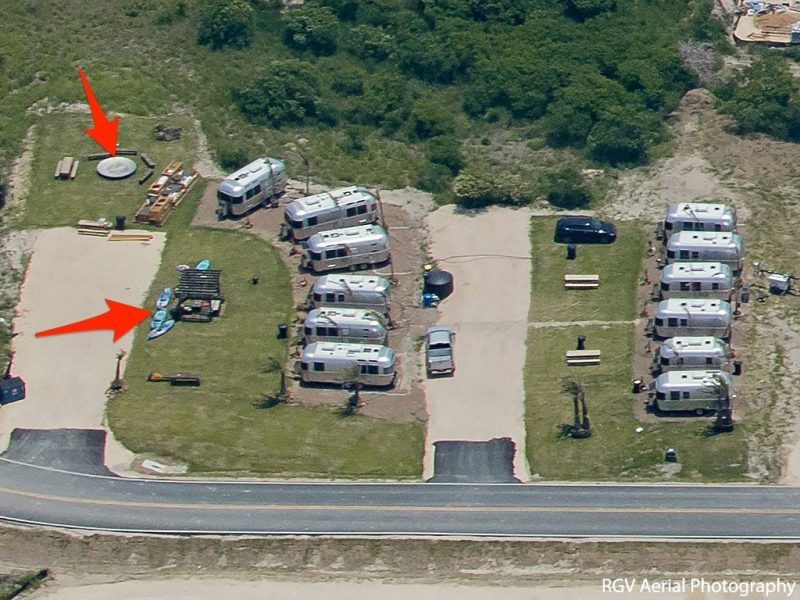
As Business Insider first reported, SpaceX plans to turn the region into its own private village complete with recreational activities.
Signs of that effort are apparent, such as a large fire pit that looks to be a piece of Starship rocket scrap metal, and rows of kayaks.
A wider view of the Airstream trailer park shows SpaceX constructing more lots to house a growing number of employees.
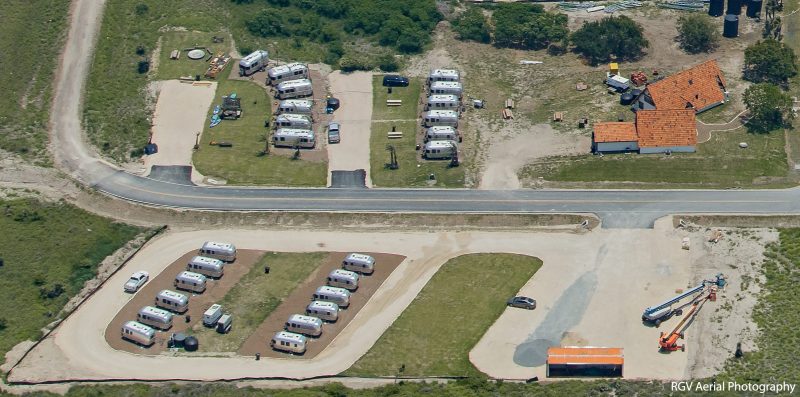
As CNBC first reported, Musk emailed all SpaceX employees in early June to say that making Starship a reality was the company's "top priority."
His email almost immediately followed the successful launch of its first astronauts aboard a long-awaited Crew Dragon spaceship, which SpaceX designed and built with NASA's help.
To the south of the Airstreams is a unique set of buildings: An A-frame house and guest house with an attached garage.
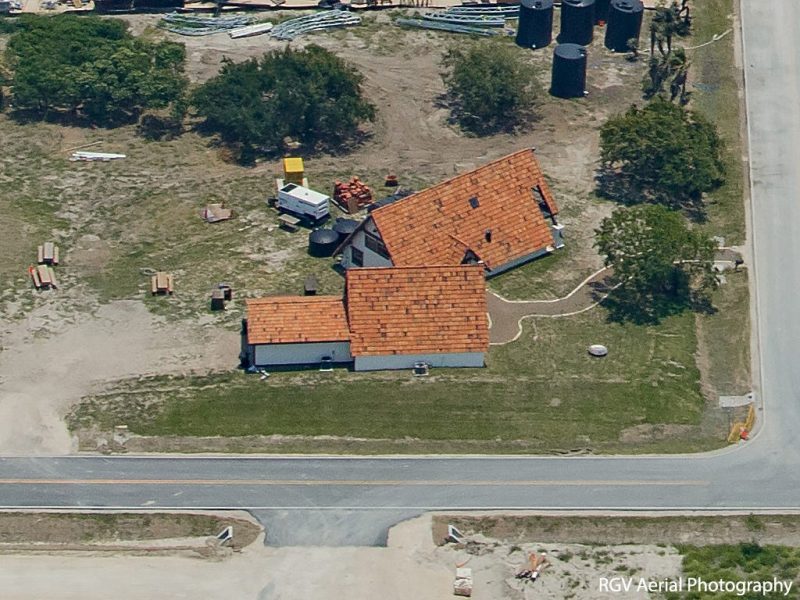
The property was sold to SpaceX in early 2020, and it's a model home for a planned community of the 1960s and 1970s called Kopernik Shores. Though the community never panned out due to a devastating hurricane, the home remained intact and was remodeled in recent decades.
Musk is reported to stay in the house when he visits Boca Chica.
SpaceX uses a special grade of stainless steel for Starship that can withstand ultra-cold cryogenic temperatures of propellants.
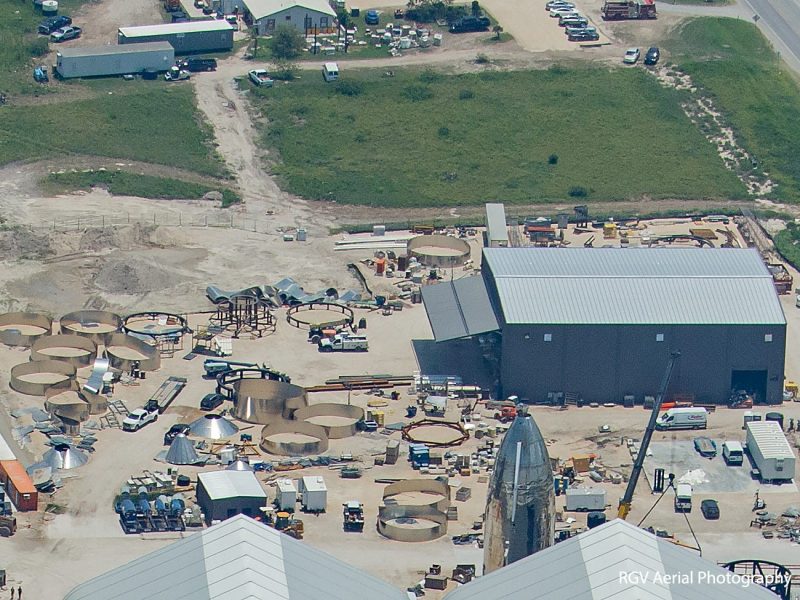
The rocket bodies are made of rolls of the metal, which are unwound, cut, and welded into rings.
Rings are made inside enormous "onion" tents, welded together into larger cylinders, and rolled out for stacking and additional welding. Finished tanks comprise the main body of Starship and store liquid oxygen and methane.
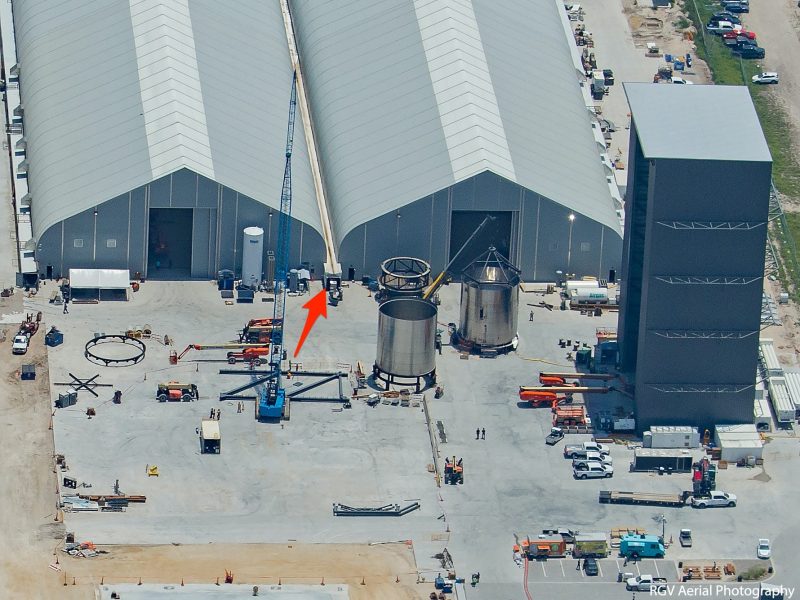
There is currently no municipal water line to Boca Chica, so SpaceX (and residents) have it delivered by truck and stored in cisterns. However, the arrow here points out what appears to be a rainwater catch system SpaceX is using for gray water.
An aerial image taken later on by Atilano (not shown in this article) clearly shows toilets and water storage tanks at the end of the V-shaped channel that runs between the roofs.
Different tents house different aspects of rocket construction. In the gray "onion" tent to the right, new and ever-improving rocket nosecones roll out of the tall bay doors.
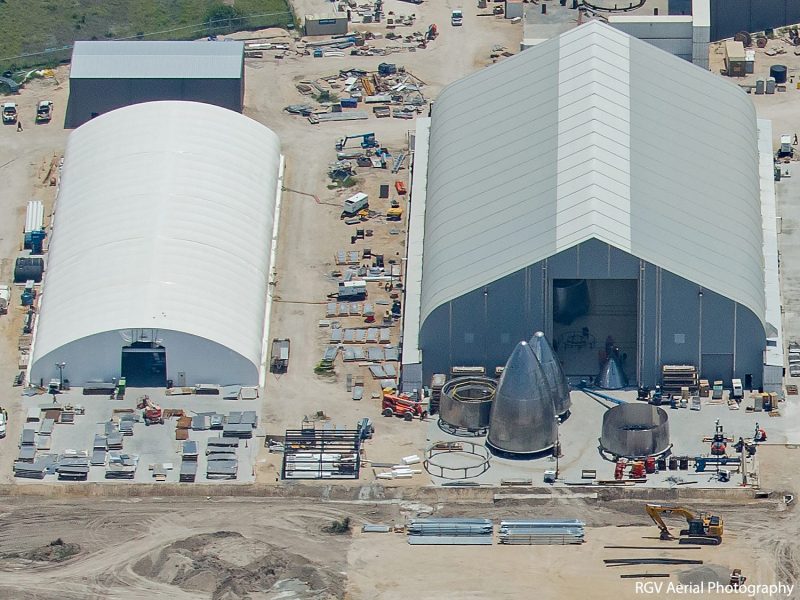
To the north are concrete stands where the ends of tanks are welded on. The large metal sphere at the top-right is called a header tank, and it's designed to store liquid methane for landing.
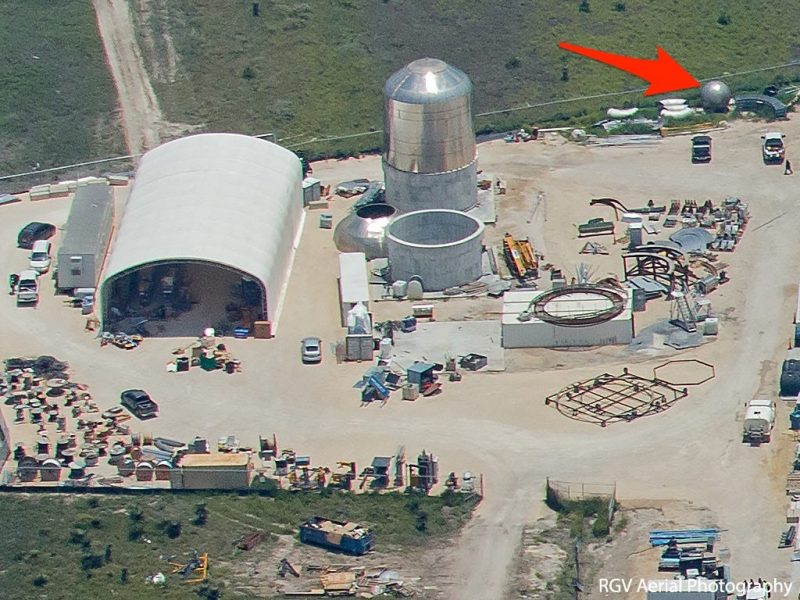
Other liquid-fueled rockets - including SpaceX's own Falcon 9 and Falcon Heavy systems - use tanks of liquid helium to expand into gas, pressurize fuel tanks, and help empty propellants out of a rocket nozzle at incredible rates.
Starship, however, is designed to rely on only methane and oxygen - a fuel and oxidizer that could, according to Musk, be manufactured on Mars with water and air. The header tank helps "autogenously" pressurize larger tanks to push out propellants. (No helium required, since the gas can't be easily collected on Mars.)
Since the nearest restaurants and grocery stores are more than 30 minutes by car, SpaceX has several food trucks visit a parking lot outside of its launch control center. Picnic tables are also available for staff use.
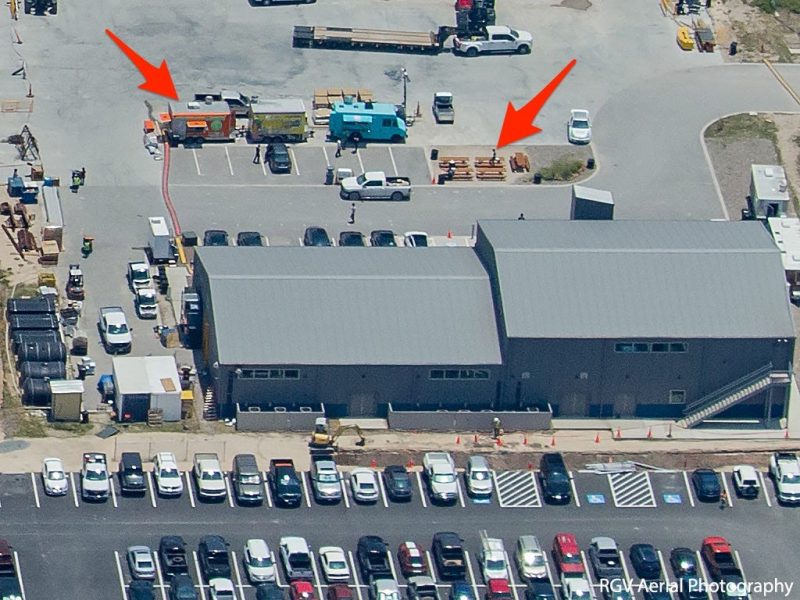
The pop-up dining facility sits just outside the gray Stargate complex, which was built for SpaceX by the University of Texas Rio Grande Valley and also functions as a student research facility.
SpaceX has made and tested about half a dozen prototypes, and all of them have either leaked, crumpled on a launch pad test stand, or exploded. This northern location appears to host scrap left by those failures.
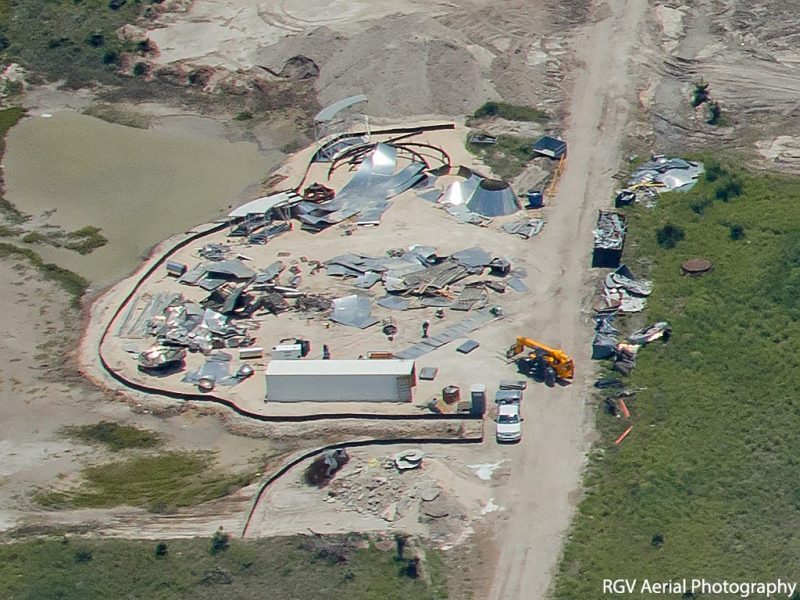
For his part, Musk expects many failures to occur with Starship prototypes. In fact, he anticipates about 20 will have to be made before one reaches orbit.
At the west end of the site is a parts yard that appears to include a prototype Starship canard, or wing, from a very early prototype that failed during a tank test.
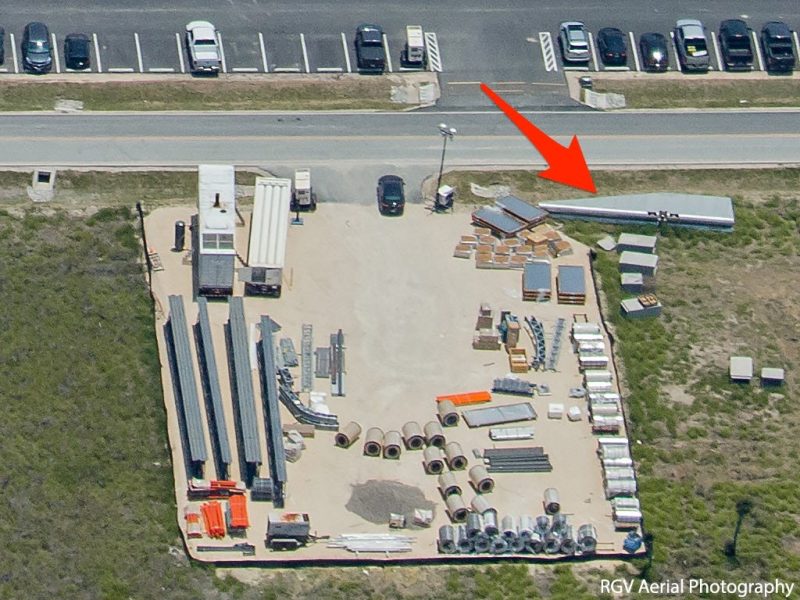
Atilano hopes to continue funding almost weekly flyovers through money contributed by SpaceX enthusiasts. This video shows part of a recent trip over SpaceX's factory area.
And this clip shows SpaceX's launch zone near the beach.
Before the company can launch a Starship to orbit, the company has to clear a major hurdle with the Federal Aviation Administration.
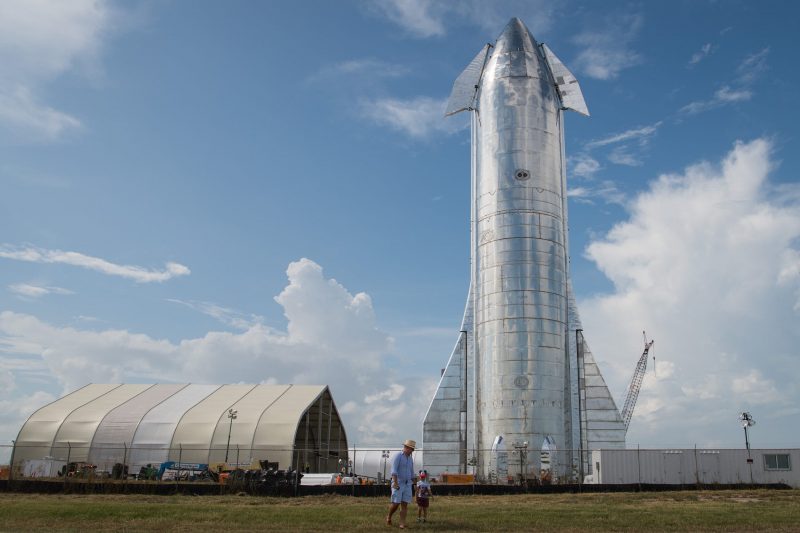
SN7 aftermath from an aerial perspective!
Is that Zeuz standing by (yellow thing on the concrete pad)?#spacex #bocachica pic.twitter.com/UhUJmj9aui
— RGV Aerial Photography (@RGVaerialphotos) June 23, 2020
As Business Insider first reported in September 2019, SpaceX earned FAA approval to change its original (and now very dated) plans for the site: from a commercial satellite launch facility into an experimental Mars-rocket development site and spaceport.
That approval operated within a larger Environmental Impact Statement, or EIS, which the FAA approved in 2014 and made room for suborbital rockets (and early Starship prototypes qualify as such).
But as Border Report wrote on July 1, the FAA now says SpaceX will first have to pass a new environmental analysis before it can launch a Starship into low-Earth orbit.
If another and very extensive EIS review is planned, as opposed to a quicker Environmental Assessment, SpaceX may face newfound scrutiny and opposition from some nearby community members - though the region generally is supportive of the project for its potential to bring jobs and an economic boost.
Have a story or inside information to share about the spaceflight industry? Send Dave Mosher an email at [email protected] or a Twitter direct message at @davemosher. More secure communication options are listed here.

